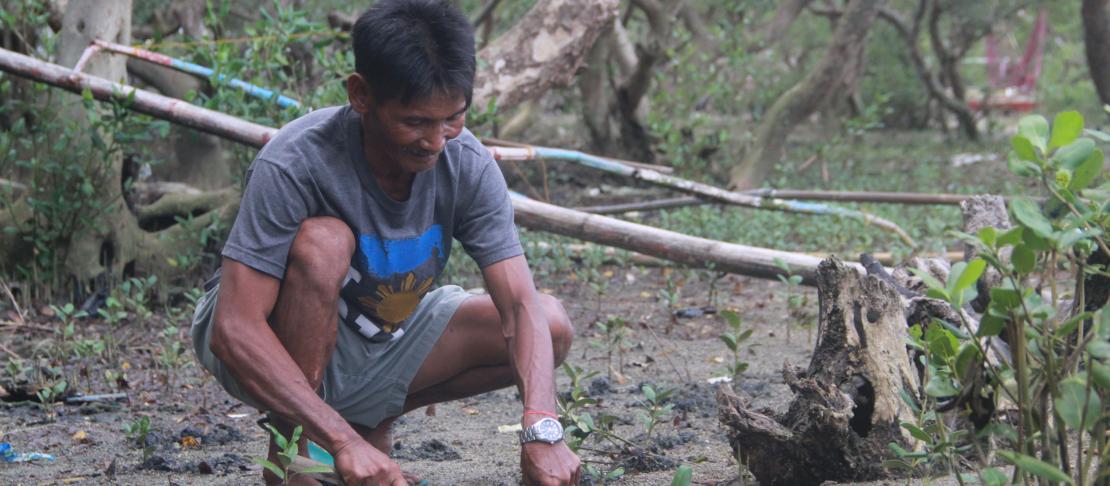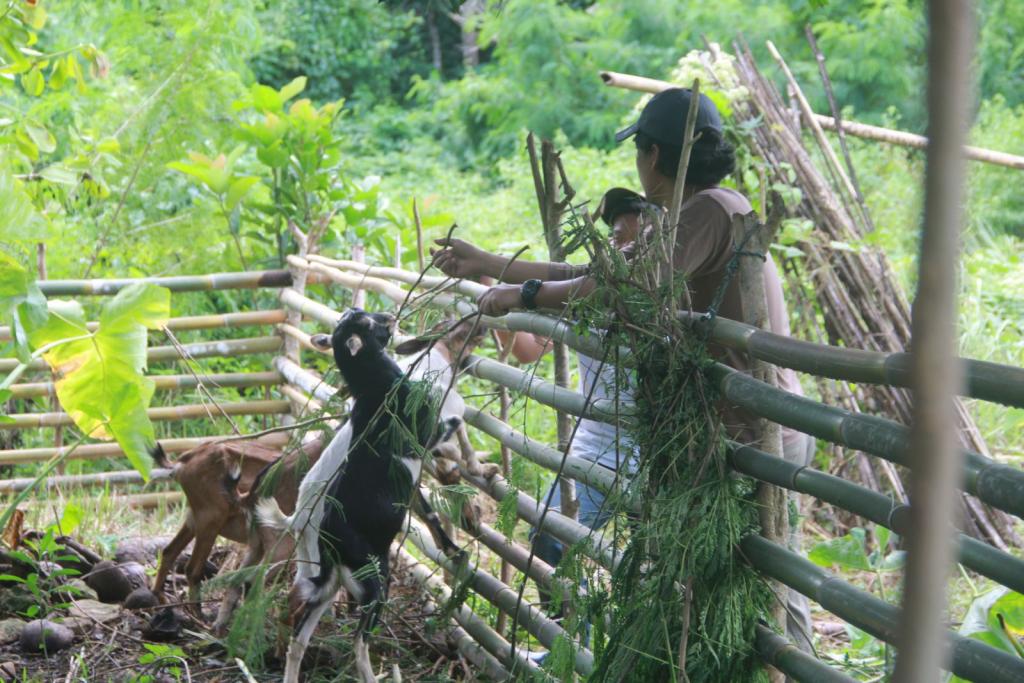Philippine community adopts climate-smart agriculture with greater involvement

The municipality of Guinayangan, Philippines, is fast becoming a model for climate-smart agriculture and participatory action research.
It seems as though goats and mangroves would not have that much in common, but they do, especially for the municipality of Guinayangan, Philippines. These two are included in the suite of climate-smart agriculture (CSA) practices introduced to the communities.
The Food and Agriculture Organization of the United Nations (FAO) defines CSA through its three pillars of improved food security, climate change adaptation and mitigation. The adoption of CSA is a potential solution to the impacts of climate change on communities that rely on agriculture.
However, CSA adoption in communities is not as straightforward as it seems especially if the people are used to traditional practices that have been handed down from generation to generation.
Ownership and involvement
Oftentimes people may use introduced technologies for a while, then go back to their old practices. What is missing? Dr. Julian Gonsalves, International Institute of Rural Reconstruction (IIRR) Senior Program Advisor, says it is important for the people to feel that they own a project.
“You have to create interest first, and then you’ll see incremental adaptation,” he comments.
Integration of CSA strategies into available community structures and practices including funds, organizations and programs is another factor. Cross-site visits among non-adopters to farmers and fishers who are actively adopting the practices would also help.
Aside from getting individuals involved, increasing support from the local government unit is also important. The municipal government of Guinayangan is now starting to introduce CSA strategies into their local planning.
IIRR and the World Agroforestry Centre (ICRAF) are successfully introducing CSA practices to the communities in Guinayangan by using concepts from participatory action research. The project is supported by the CGIAR Research Program on Climate Change, Agriculture and Food Security in Southeast Asia (CCAFS SEA).
Now, how are goats and mangroves the success stories of CSA adoption in Guinayangan?
Mangroves
Guinayangan is a municipality in Quezon province, and spans both mountainous and coastal areas. Largely an agricultural community, it has 54 barangays (villages). Eight of the coastal barangays were involved in replanting the coastline with mangroves. The communities planted locally existing mangrove species in the frontlines and beach areas.
Carlo Palima, a local researcher with IIRR, says the seedlings in all but one village had around 30-40% survival rates. Considering that the average survival rate of seedlings in the Philippines is at the most 20%, the barangays are doing well.
One fisherman, Efren Nojor, even decided to take matters into his own hands and voluntarily replant seedlings. When we visited his barangay in November 2015, he had already replanted over 7000 seedlings and made a hedge out of them around his house.
“If we don’t do this, then our barangay, livelihoods and children would suffer,” he says. “We hope to be resilient against typhoons and strong waves.”
IIRR researcher Rene Vidallo demonstrates how to feed goats with Calliandra. Goat rearing is a climate-smart practice where women farmers in Guinayangan, Philippines derive better incomes. Photo: A. Cruz (CCAFS)
Goats and native pigs
Other CSA practices include rearing goats and establishing an intensive feed garden nursery for fodder grasses, like Guinea grass and Napier grass. Livestock is considered an asset for women, as it requires minimal production costs and would result in greater economic empowerment for them.
Applying the community innovation fund approach, the project team purchased and distributed native pigs and goats to farmers in Guinayangan. Cresensia Abellada started taking care of goats under the IIRR-ICRAF project. She now has five goats that feed on Calliandra, an introduced fodder tree. With the fodder trees and grasses, she does not need to buy commercial feeds. An added benefit is that the goat manure could be used as fertilizer for her crops. She testifies: “Goats are easy to take care of. I was able to sell one for PhP1000 (USD 22), with which I was able to buy shoes for my children.” Women can use the income they get from the livestock for their family’s needs.
Farmers have also started rearing native pigs in their backyards. Many households in Guinayangan use commercial pigs; however, the native pigs are being promoted for several reasons:
- They are more resilient to higher temperatures and diseases. To further manage the temperature, the pig pens were built using natural materials available.
- Native pigs eat various plants and plant products, like dried coconut meat, rice bran and sweet potato tops, thus, farmers do not need to spend as much on commercial feeds.
- Even with their smaller size, markets prefer the native pigs because they taste better than commercial pigs.
It is hoped that the local government unit and the communities would support these efforts towards adopting CSA. From the stories from the ground, goats and mangroves do have a lot in common.
Read more
- Mangroves shield communities from typhoons, storm surges
- Farmers in Southeast Asia learn about climate-smart agriculture practices
- Swimming towards adaptation with climate-smart aquaculture
Amy Cruz is the junior communications specialist for the World Agroforestry Centre Philippines. She is also a communication consultant with the CCAFS SEA program.




